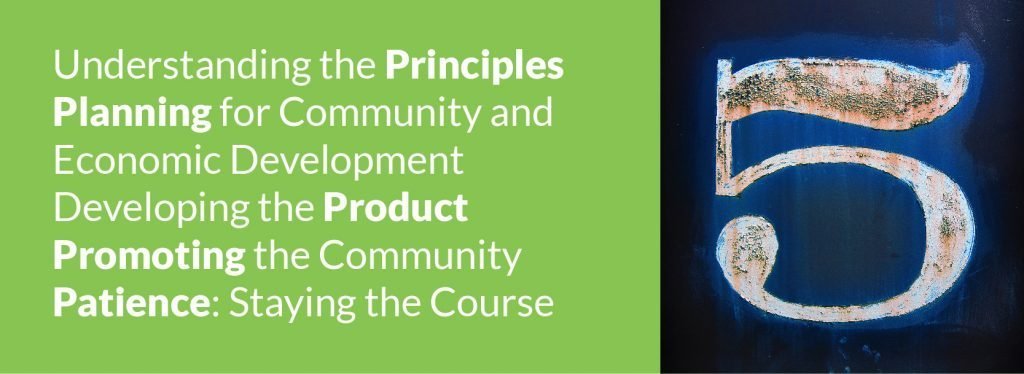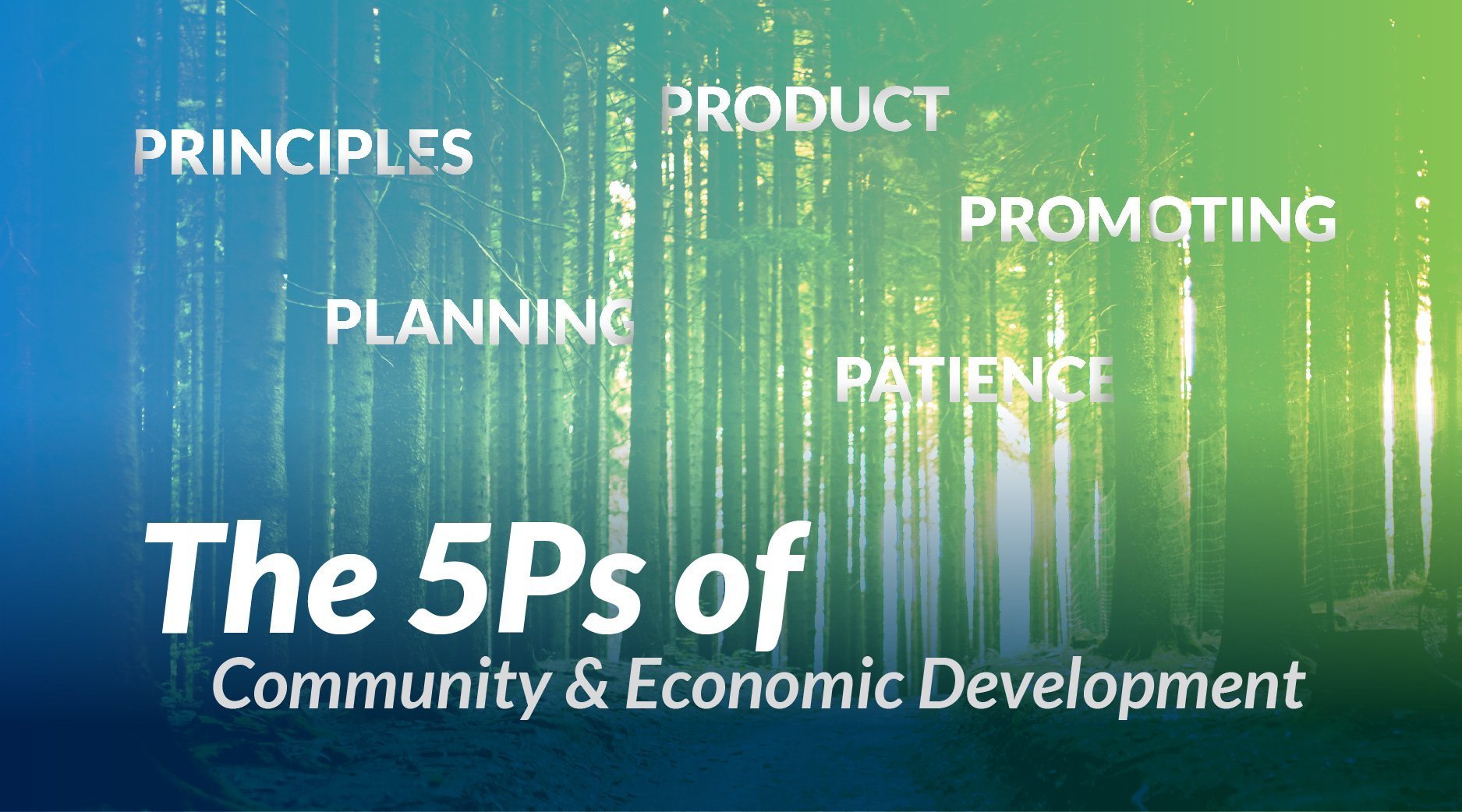Sometimes we communicate and remember things using acronyms, especially in this age of texting and short tweets. We celebrate week’s end with a TGIF and express our amusement with a LOL. Community and economic development (CED) is not just a simple phrase, but the following “5Ps” can provide a very useful guide for success:

Aspects of these 5Ps will be discussed in many blogs to come, but here is a brief summary:
1. Understanding the Principles.
 Community and economic development (CED) is a team sport. The more widespread an understanding of how to play the “game” is among local stakeholders, the more likely is success. A core purpose of Prosperous Places is to help all team members learn more about community and economic development.
Community and economic development (CED) is a team sport. The more widespread an understanding of how to play the “game” is among local stakeholders, the more likely is success. A core purpose of Prosperous Places is to help all team members learn more about community and economic development.

2. Planning for Community and Economic Development.
A strategic plan with a vision for a community’s future with goals and objectives to get there has helped many communities become more prosperous. A plan based on broad community input can unite and focus various stakeholders.
3. Developing the Product.
 Being development ready is very important to grow and attract the kinds of economic activity a community desires. When deciding where to relocate, expand, or start-up, companies usually screen many communities to find the most profitable location. Different companies have different location criteria, but available sites and buildings, a good labor force, good infrastructure, and a good business climate are generally among them. No community is perfect, but continuously improving the “product” (place to live and work) is the path to success.
Being development ready is very important to grow and attract the kinds of economic activity a community desires. When deciding where to relocate, expand, or start-up, companies usually screen many communities to find the most profitable location. Different companies have different location criteria, but available sites and buildings, a good labor force, good infrastructure, and a good business climate are generally among them. No community is perfect, but continuously improving the “product” (place to live and work) is the path to success.

4. Promoting the Community.
You can build a better mousetrap (a good community), but if no one knows about it, no one will buy. Branding and marketing increases awareness of a community to its target audiences – companies looking for a location, tourists, educated young professionals, or whomever/whatever the community wants to attract.
5. Patience: Staying the Course.
 Community and economic development (CED) is a continuous process and success is measured over years, not days or months. Adherence to a strategic plan with continuous course adjustments as necessary and an understanding that a community’s investment will pay dividends over time is a key to success. Public-private partnerships can often provide continuity and reduce the likelihood of false starts and stops that can happen when new public officials are elected.
Community and economic development (CED) is a continuous process and success is measured over years, not days or months. Adherence to a strategic plan with continuous course adjustments as necessary and an understanding that a community’s investment will pay dividends over time is a key to success. Public-private partnerships can often provide continuity and reduce the likelihood of false starts and stops that can happen when new public officials are elected.
The 5Ps can help a community FOCUS (Follow One Course Until Successful) and meet its GOALS (Golden Opportunities Allowing Large Successes)!

- Which of the “Ps” does your community do well and why?
- Which could it improve upon and how?
We look forward to your input. Have some thoughts to the questions and content above? Feel free to post them in the comments below.
![2021 Prosperous Places Logo [TM]](https://www.prosperousplaces.org/wp-content/uploads/2021/02/20210205_JI_PPTM-Logo.png)



